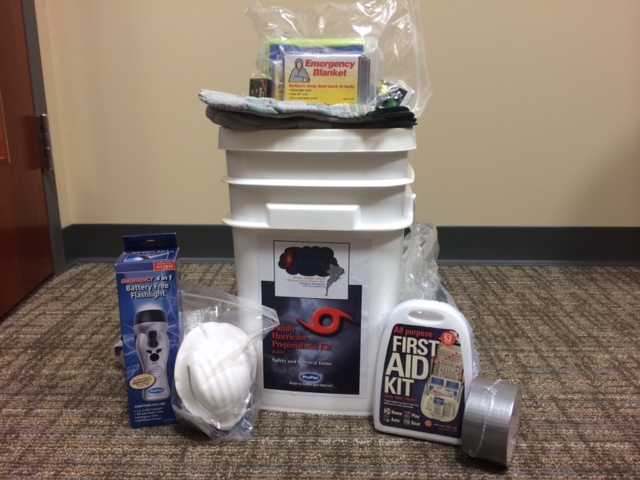- Ensure you and your family are prepared before the next disaster impacts your community. Following an emergency or disaster, you may lose access to basic services, such as power and water, and be subject to limited or no access to essentials like food and water. With that in mind, stock up on essentials now and build a disaster supply kit to last you and your family for a minimum of 3 days.
- Each individual or family disaster supply kit will differ based on personal needs. Review the list below to help you get started on basic items to include in your kit. Assess your individual and family needs to determine other critical items to include.
Basic Disaster Supply Kit Items
Water – You will need water for drinking, cooking and sanitation purposes. Pack a minimum of 1 gallon daily per person for 3 to 7 days.
Food – You will need enough for a minimum of 3 to 7 days:
- Non-perishable packaged or canned food and juices
- Manual can opener
- Foods for individuals with dietary restrictions (i.e. infants, elderly, etc.)
- Snack foods
- Cooking tools and fuel
- Paper plates and plastic utensils
Flashlight and Extra Batteries
Pillows, Blankets and/or Sleeping Bags
Clothing – Include a complete change of clothes suitable for your areas climate. Be sure to include sturdy shoes to protect you from debris or other sharp objects you may encounter outdoors post-storm.
First Aid Kit, Prescription Medication and Other Medicines
Radio – Battery operated and NOAA weather radio
Toiletries
Cleaning Supplies – Include garbage bags, moisture wipes and other items you may need to sanitize your home or surrounding post-disaster.
Special Items – Assess all family member needs. Consider other items needed for infants, elderly and individuals with access and functional needs (i.e. medical items, baby bottles, etc.)
Cash – Banks and ATMs may not be open or available for extended periods following a disaster.
Toys, Books and Games
Important Documents – Consider storing all critical documents in a waterproof container, as well as, saving them electronically. These items can include but are not limited to insurance, medical records, bank account numbers, Social Security card, etc.
Tools
Pet Care Items
- Proper identification / immunization records
- Ample supply of food and water
- Carrier or cage
- Medications
- Muzzle and leash
- Photo of you and your pet(s) – in the event you are separated from your pet, having an updated photo with your pet will help validate pet ownership.


